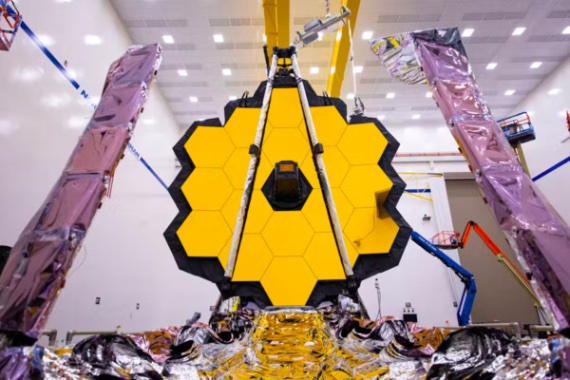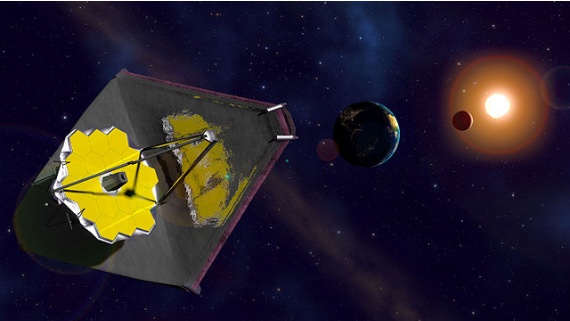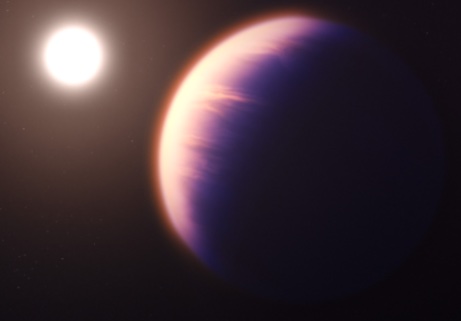It has been said that it is more than a just a telescope; it is more like a time machine that allows us to look back into the remote past of the universe that has been inaccessible until now. Since its long-awaited launch on Christmas Day 2021, the James Webb Space Telescope (JWST), developed by NASA—in collaboration with the European Space Agency (ESA) and the Canadian Space Agency (CSA)—has not only begun to live up to the expectations of researchers but is also one of those scientific endeavours that manages to engage the media and the public with captivating images of a previously uncharted universe.
The JWST has often been presented as the replacement for Hubble, but NASA prefers to speak of the successor; it sounds the same, but there is a nuance: the new eye of humans in space will not limit itself to continuing the work of its predecessor, but will expand its domains especially in the infrared, a band of the light spectrum in which Hubble only reaches the near band, just adjacent to visible light. As more distant—and therefore older—astronomical objects have a higher redshift in the light they emit, a telescope with greater infrared coverage is needed to observe them. This is also why infrared telescopes must circumvent the blockage of this radiation by the Earth’s atmosphere, and for this reason space is the ideal location.

Reaching the mid-infrared presents an additional technical complication, the need to keep the telescope extremely cold—below 50 kelvin or -223°C—so that the telescope’s own thermal radiation does not blind it, something akin to what happened to old photographic film when it was exposed to too much light. In the JWST this has been solved with a passive system of solar shields and a cryogenic refrigerator, thus avoiding the use of refrigerants such as helium or nitrogen used in other previous instruments, which eventually evaporate.
But apart from its increased infrared coverage, the JWST is a much more sensitive eye than its predecessor: its 6.5-metre mirror, compared to Hubble’s 2.4 metres, gives it a surface area of 25 square metres, more than six times larger than that of its predecessor. Its field of view is also about 15 times that of Hubble. Its position at the L2 Lagrangian point—one of the five points of gravitational equilibrium in the Earth-Sun system—allows it to keep the Sun, Earth and Moon behind its heat shield at all times; but in return, the remoteness of this point (1.5 million kilometres) makes any repairs such as those carried out on Hubble, located in low Earth orbit, impossible.
Photo Gallery
[+] Watch Fullscreen
The deepest infrared image of the universe
All this increased performance is already paying off. Physicist and software developer John Christensen has created an online tool to compare Hubble and JWST images of the same objects. And although Hubble has been and still is an immensely valuable and sophisticated source of data and images, the difference between those obtained by the two telescopes appears as stark as swapping the optics of a decade-old mobile phone for those of a state-of-the-art model.
On 11 July 2022, NASA began publishing the first images taken by JWST, starting with the so-called Webb’s First Deep Field, the deepest infrared image ever taken of the universe. The significance of this milestone merited a presentation by U.S. President Joe Biden himself. The image shows the SMACS 0723 group of galaxies, about 4.6 billion light-years away, visible from Earth’s southern hemisphere. The photograph covers a portion of sky about the size of a grain of sand held at arm’s length. It shows thousands of galaxies with a resolution never before achieved, including some much older and more distant ones—seen when the universe was barely a billion years old—that appear magnified by gravitational lensing, which occurs when larger, closer masses bend the light reaching us from more distant structures.

Immediately NASA released other images: the Carina or Eta Carinae Nebula, one of the largest and most luminous nebulae in the sky, about 8,500 light-years away and comprising many stars notably more massive than the Sun, along with a stellar nursery—a region of new star formation—photographed in unprecedented detail; this image has been named Cosmic Cliffs because the cavity blasted into the nebula by ultraviolet light and the stellar winds of young stars resembles a nocturnal mountainous landscape.
For its part, Stephan’s Quintet, discovered in 1877, is the first compact group of galaxies, showing five galaxies seemingly grouped together; in reality only four of them are clustered together, while the fifth is closer to us and only appears joined to the rest from our perspective. Fans of the 1946 Christmas classic It’s a Wonderful Life will remember Stephen’s Quintet from the scene in the firmament where the celestial conversation between angels takes place. This is the largest image taken by JWST so far, constructed from 1000 separate shots and with a total size equivalent to one-fifth of the lunar diameter. In addition to revealing new details about the interactions between galaxies during their development, it shows the flows of gas and light around a black hole at a resolution never before achieved.
Another early JWST image has focused on the Southern Ring Nebula, or NGC 3132. About 2,500 light-years from us, this is a planetary nebula, a cloud of gas expanding as it is ejected by a dying star. Compared to the Hubble image of the same object, the JWST image shows that the second and fainter of the two orbitally linked stars that form this structure, the one in the terminal phase, is enveloped by a cloak of dust. The level of detail in the image makes it possible to appreciate how these cosmic materials are shaped over time by the younger star, from the newer inner layers to the older outer layers.
Key to revealing data on exoplanets
JWST’s potential has also tested its ability to analyse planetary atmospheres through their light spectra. With a single observation the telescope has been able to determine that the atmosphere of WASP-96b, a gas giant exoplanet located 1,150 light-years away and discovered in 2013, contains water, clouds and haze. The height of the peaks of the transmission spectrum has been used to calculate an atmospheric temperature of about 725°C.

In the few short months it has been in operation, JWST has continued to astound us with new images of Jupiter, the Cartwheel Galaxy, the M74 Phantom Galaxy, some of the most distant and oldest galaxies ever observed—only a few hundred million years after the Big Bang—and the Tarantula Nebula, along with new data showing for the first time the presence of CO2 in the atmosphere of an exoplanet. In September 2022, the new telescope surprised the world with its first direct image of an exoplanet, HIP 65426 b, a gas giant about seven times heavier than Jupiter, located 385 light-years away. This is not the first time something similar has been achieved—Hubble has also done it—but scientists are confident that JWST’s sensitivity will reveal valuable data on the physics, chemistry and formation of exoplanets, and even uncover new distant worlds. What’s more, analysis of the light spectra of these planets could even detect chemical signatures of the existence of life, possible inhabited planets whose confirmation, unfortunately, we will probably never have.
Comments on this publication